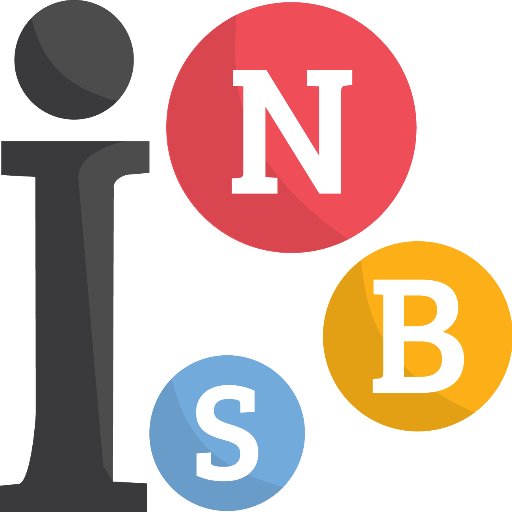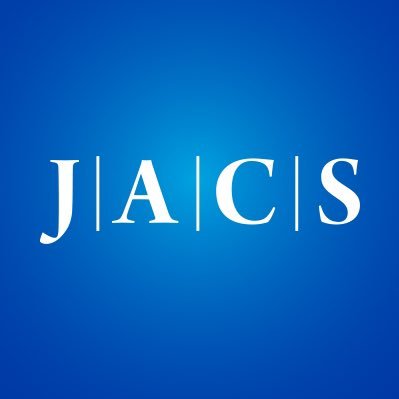
The Chan Lab
@TheChanLab
Followers
3K
Following
4K
Media
429
Statuses
1K
Integrated Nanotechnology & Biomedical Sciences (INBS) Lab | Prof. Warren Chan | @bme_UofT @chemuoft @ChemEng_UofT | Tweets by students of INBS
Toronto, Ontario
Joined April 2016
🚨New Paper🚨 how do you screen nanoparticles other than LNPs in vivo? Ayo & Vanessa identified key design parameters that enable surface barcoding of any nanoparticle type. This allows the screening of any nanoparticle type in vivo. To read more visit:
0
0
5
🎓🎓Meet our latest Alumni🎓🎓 Lab members (Bram Bussin, Hongmin Chen, Zahra Sepahi and Ben Stordy) successfully defended their doctoral theses. It has been an exciting and eventful couple of months. We are proud to introduce our latest Drs. (Hongmin Chen not pictured)
0
0
3
The Binding Affinities of Serum Proteins to Nanoparticles | Journal of the American Chemical Society @UofT @UofTNews
pubs.acs.org
Nanoparticles can be coated with targeting ligands to deliver medical agents to specific cells. Serum protein adsorption affects the binding of nanoparticles to target cells. We hypothesized that...
0
6
33
🚨New Paper🚨 @ben_stordy and @zsepahi_ answer the question: Why don't nanoparticles deliver to target cells? For details, see the tweet below:
🚨 New Publication: Why don’t nanoparticles deliver to target cells?🚨 We built a model, termed the binding ratio, that predicts nanoparticle targeting efficiency with 90% sensitivity and 88% specificity‼️ Check out our paper here published in @J_A_C_S:
0
1
12
🚨New Paper🚨 Want to deliver nanoparticles outside the liver? Bram et al. identified nanoparticle corona proteins that liver macrophages use to capture nanoparticles. This discovery helped increase delivery to organs outside the liver by 12x! 🔗 https://t.co/vlc2h0jTA7
0
1
9
🚨New Paper 🚨 Bram et al. identified how nanoparticle charge interfaces with the cellular glycocalyx, dramatically affecting nanoparticle delivery. This enabled a new approach to improve nanoparticle targeting! 🔗
advanced.onlinelibrary.wiley.com
The cellular glycocalyx is a dense and negatively charged layer of carbohydrates that ubiquitously coats cells. Nanoparticles must permeate through the glycocalyx to access receptors on the cell...
0
4
19
Congratulations to the academic community at the @UofIllinois for a wonderful 20th anniversary event to celebrate the formation of their Department of Bioengineering! Over this relatively short period, the department has transitioned from a nascent effort launched in 2004 with
1
1
43
Congratulations to our latest Alumni, Dr. Vanessa Li, on a successful defence!
0
0
12
Here's the latest release from @TheChanLab! 🙌 @jamielywu and collaborators at @bme_uoft show that nanoparticles cross tumor #EndothelialCells predominantly using the non-receptor-based macropinocytosis pathway. 💬 More in @NatureNano | https://t.co/JSyYdRhHSV
0
4
13
🚨🚨NEW PAPER ALERT🚨🚨 @jamielywu et al. discovered the pathways tumour endothelial cells use to transport nanoparticles. Link to paper: https://t.co/omGzAiJUzx Below is a thread by Dr. Jamie Wu summarising the method and results:
How do nanoparticles enter the tumour? In our latest study @NatureNano, we found tumour endothelial cells bring NPs in mostly using macropinocytosis & interestingly, macropinocytosis membrane ruffling is elevated in tumour vs healthy vessels 🧐@TheChanLab
https://t.co/FLccqLWAqh
0
4
15
🚨New Paper🚨 @MladScientist et al. utilized 3D electron microscopy to visualize and study the transport of nanoparticles across tumour blood vessels. Link to paper: https://t.co/rRYfsoNNmF Below is a thread summarising the method and results:
pnas.org
Delivering medical agents to diseased tissues has been challenging, leading researchers to study the in vivo transport process in the body for impr...
I’m excited to share that my paper was published this week in @PNASNews and that I gave an oral presentation on this work in Singapore at the @ICBME2024 conference. @TheChanLab (1/n)
0
3
7
🚨New paper🚨 Bringing quantum dot barcodes to the point-of-care! Matt O. et al. designed a portable device that harnesses the unique fluorescence of quantum dots for multiplex diagnostics. Their device runs sample-to-answer in under 40 minutes.⏲️ https://t.co/Y1TA4WJFpt
pubs.acs.org
The COVID-19 pandemic accelerated the development of automated systems for detecting molecular targets for the point-of-care. However, these systems have limited multiplexing capabilities because of...
0
1
19
BREAKING NEWS The Royal Swedish Academy of Sciences has decided to award the 2024 #NobelPrize in Chemistry with one half to David Baker “for computational protein design” and the other half jointly to Demis Hassabis and John M. Jumper “for protein structure prediction.”
514
9K
20K
We would like to welcome our new Post-doc, Huiyan Li, and PhD student, Daniel Kwon, to Chan Lab!! 🥳🥳
0
1
8
Congratulations to our latest Alumni, Dr. Matthew Osborne, on a successful defence and the creation of the QBox!! 👨💻👨🎓🥳🎉🥂
0
1
19
Congratulations to our new Alumni, @jamielywu, @aydenmalek_, and @matt___nguyen, on their successful defence! Here is to their next adventure! 🥳🥳
0
2
29
Congratulations to our Postdoctoral Alumnus, Dr. Stefan Wilhelm (@Wilhelm_Lab) on achieving this significant milestone @UofOklahoma!😃🙌🎊
Stefan @Wilhelm_Lab received the William H. Barkow Presidential Professorship @UofOklahoma. Thank you! Thank you to everyone who contributed, particularly all mentees, mentors, collaborators, colleagues, and friends. @sbme_ou @ENGINEERINGatOU @OUResearch @StephensonCC
0
0
16
Meet the editors🧑💻 of @acsnano Part II featuring @GraceGDHan, Luis @LizMarzan_Lab, @Tony_Y_Hu, Mathieu @salannema, Young Hee Lee @SKKU_1398, EiC Xiaodong @ChenXD_NTU_Sg, Chunying Chen @Nanocenter_, and Warren @TheChanLab🙌
1
7
20
Congratulations to Jamie Wu from the @TheChanLab! 🎉 Jamie is the first recipient of the Jennifer Comyn Graduate Award for #Cancer Research. The award supported her research to learn how nanoparticles enter tumours to deliver drugs. #UofT Learn more 👉 https://t.co/kyj1zJbO7q
0
4
28
🚨New paper🚨 Ayden and Ayo developed a method to stabilize capture sequences in DNA biosensors. This method improved DNA biosensors' clinical and analytical sensitivity by over 3 and 100-fold. They termed this new strategy RIGID-DNA. Check it out here:
pubs.acs.org
Detecting nucleic acids at ultralow concentrations is critical for research and clinical applications. Particle-based assays are commonly used to detect nucleic acids. However, DNA hybridization on...
0
2
21















